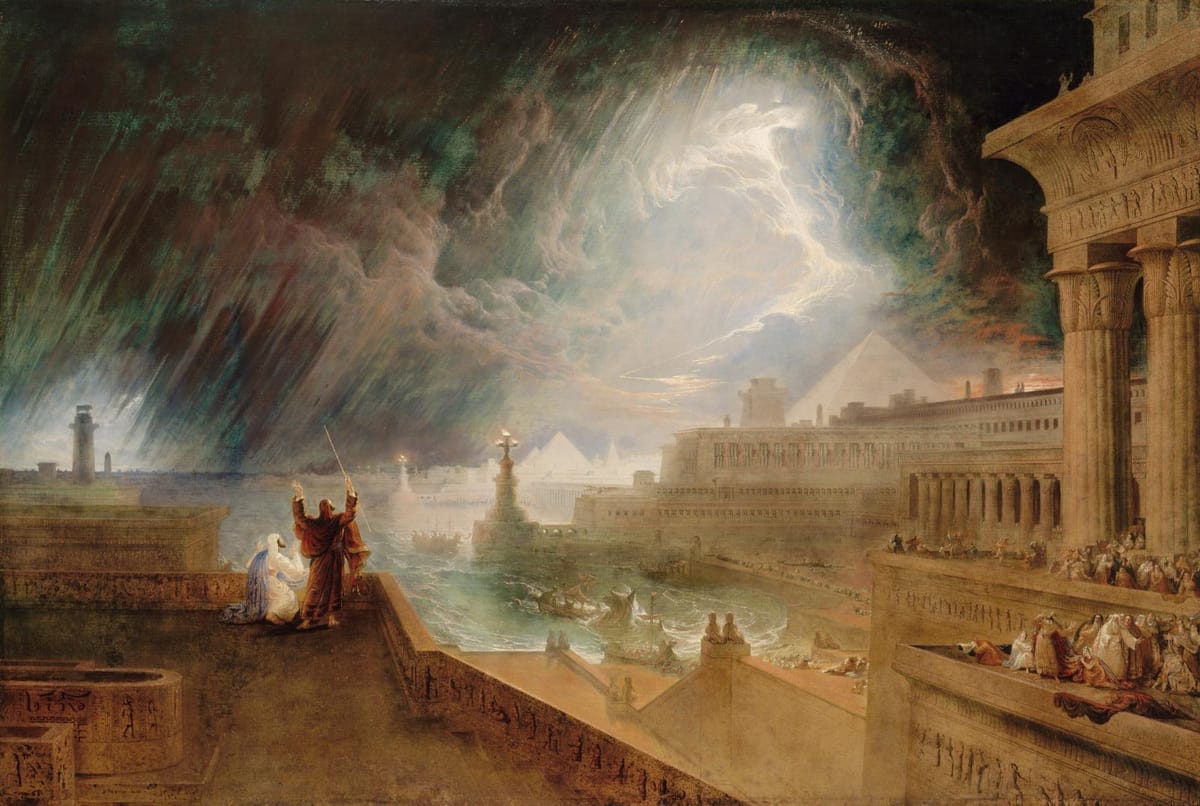The Seventh Plague

The story of the seven plagues of Egypt is a central narrative in the biblical book of Exodus, depicting the struggle for liberation of the Israelites from slavery under the oppressive rule of the Pharaoh. According to the biblical account, Moses, upon returning to Egypt from exile, was tasked by God to demand the release of the Israelite people. When Pharaoh refused to heed these demands, a series of divine plagues were unleashed upon the land of Egypt as signs of God's power and as warnings to the Pharaoh to let the Israelites go.
1. Water turned to blood: The first plague struck the Nile River, the lifeblood of Egypt, turning its waters into blood. This transformed the river into a foul and undrinkable substance, killing fish and causing great distress among the Egyptian people who depended on it for sustenance and irrigation.
2. Frogs: The second plague brought forth a proliferation of frogs, which swarmed the land of Egypt, invading homes, beds, and every corner of daily life. This plague emphasized the omnipresence of divine judgment and demonstrated the inability of the Egyptian magicians to replicate or dispel the plague.
3. Gnats or lice: The third plague manifested as a swarm of gnats or lice that infested both people and animals, causing discomfort and irritation. This plague highlighted the powerlessness of the Egyptian magicians to replicate the miraculous signs performed by Moses.
4. Flies or wild animals: The fourth plague introduced either a swarm of flies or a multitude of wild animals (possibly flies or beetles) that tormented the Egyptians, causing destruction and chaos throughout the land. This plague intensified the suffering and demonstrated God's authority over nature.
5. Disease on livestock: The fifth plague afflicted the livestock of Egypt with a deadly disease, resulting in widespread death among cattle, sheep, and other animals. This plague targeted the economic livelihood of the Egyptians and emphasized the distinction between the Israelites and the Egyptians.
6. Boils: The sixth plague brought painful boils upon the skin of the Egyptians, causing intense suffering and agony. This affliction extended to both humans and animals, demonstrating the severity of divine judgment against those who continued to resist God's will.
7. Hailstorm: The seventh plague culminated in a devastating hailstorm that struck Egypt, unleashing hailstones mixed with fire upon the land. This catastrophic event destroyed crops, trees, and livestock, devastating the agricultural heartland of Egypt and further illustrating the power of God's judgment.
Despite the escalating severity of these plagues, Pharaoh's heart remained hardened, and he continued to refuse the demands for the release of the Israelites. It was only after the final plague, the death of the firstborn, that Pharaoh relented, allowing the Israelites to depart from Egypt under the leadership of Moses. Thus, the story of the seven plagues of Egypt serves as a testament to God's power, justice, and ultimate triumph over oppression and tyranny.